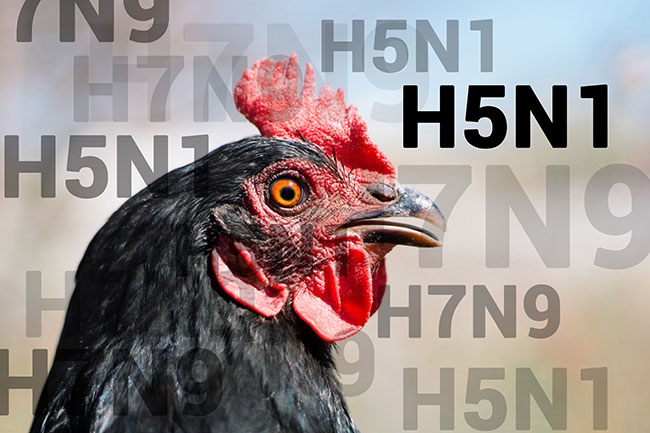
AI Vaccine Roundup: Protection against an ongoing threat
By Treena Hein
Features HealthAn exploration of the newest avian influenza vaccines.
 AI exists in wild bird populations, it spreads easily and has recognized potential to mutate into new and more dangerous strains. Photo: Fotolia
AI exists in wild bird populations, it spreads easily and has recognized potential to mutate into new and more dangerous strains. Photo: FotoliaAvian influenza (AI) is a significant issue for the entire poultry industry with the potential to disrupt food production within a given country or even on a worldwide scale. And, because the virus exists in wild bird populations, it can be spread easily and has recognized potential to mutate into new and more dangerous strains.
Major companies are working hard to produce vaccines against this disease. There are several currently on the market, but they differ in mode of action (see sidebar online) and even method of delivery. Here’s a round up of the newest developments.
Recombinant NDV-H5Nx, NDV-H7Nx, NDV-H9Nx – Avimex
Developed by: Jörgen A. Richt, director of the United States Department of Homeland Security’s Center of Excellence for Emerging and Zoonotic Animal Diseases at Kansas State University (KSU), and Wenjun Ma, associate professor at KSU, in collaboration with Adolfo Garcia-Sastre, director of the Global Health and Emerging Pathogens Institute at Mount Sinai Hospital, New York. Avimex provided some funding and holds worldwide rights.
Use so far: One form of the vaccine has been approved and deployed in Mexico and Egypt.
Type of vaccine: Live and killed recombinant Newcastle disease virus
Details:
- Also protects against Newcastle disease.
- Enables test for Differentiating Infected from Vaccinated Animals (DIVA Compatible).
- Allows for production against new strains within weeks.
- Currently the only vaccine on the market that can be administered in aerosol format, which means thousands of birds can be treated in a matter of hours. Tests will also be conducted this year relating to administration to poultry by water uptake.
Vectormune AI – CEVA
Use so far: Commercially available in Mexico, Egypt and Bangladesh. Registered in the U.S. with 100 million doses stockpiled for the U.S. Department of Agriculture (USDA).
Type of vaccine: Live vector vaccine in frozen form.
Details:
- DIVA compatible.
- Effective against H5NI AI subtypes as well as Marek’s disease.
- Live vector vaccines avoid interference of maternally derived antibodies that stop early vaccination in hatcheries.
Intervet Nobilis H5, H7 and H9 vaccines – Merck
Use so far: Nobilis H5N2 used in Mexico and Egypt; H9 used in Middle East region and North Africa; H7 not yet used.
Type: Inactivated
Details:
- H5N2 DIVA compatible.
- H5N2 effective against H5N1 infections.
- Inactivated vaccines are easy to apply, with long immunity duration.
Avian Influenza Vaccine, RNA – Merck
Developed by: Harris Vaccines (acquired by Merck in 2016)
Type: Non-living recombinant
Use so far: Merck has filled a stockpile order from the USDA for 48 million doses
Details:
- Can be DIVA compatible.
- Non-living recombinant vaccines have a rapid response to new strains and a good safety profile.
Several AI vaccines developed by MeriaL
- TROVAC AIV H5 (effective against H5N1) – Killed virus; more than a billion doses have been sold in Mexico and Central America. Also licenced in Italy and Pakistan. Only USDA-licensed AI vaccine that allows administration to day-old chicks.
- GALLIMUNE Flu H5N9 (effective against H5N1 as well) – Inactivated; DIVA compatible.
- BIO FLU H7N1+H5N9 – Killed virus; licenced in Italy, Mexico and Vietnam.
- GALLIMUNE 208 – Killed virus; licenced in six Middle Eastern countries.
Avian Influenza Vaccine, H5N1 Subtype, Killed Virus – Zoetis
Type: Inactivated
Use so far: USDA conditional license granted for chicken, further studies in progress. The USDA awarded a contract for Zoetis to produce 34.2 million doses in 2016 and another 34.2 million doses in 2017.
Details:
- Not strictly DIVA compatible.
- Protection against other H5 subtypes varies depending on divergence in the vaccine strain.
Print this page